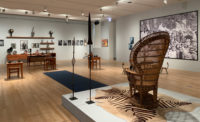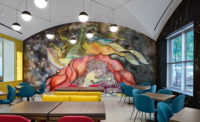|
Wellington “Duke” Reiter, FAIA, a respected architect, urban designer, and educator, has been named the new president of the venerable School of the Art Institute of Chicago (SAIC). Reiter succeeds Tony Jones, who held the position for 18 years. Jones will become school chancellor for a year and then retire.
Reiter takes the helm on Aug. 25. He most recently was dean of the College of Design at Arizona State University. During his five-year tenure, he oversaw a major ASU expansion in downtown Phoenix and successfully lobbied for a 2006 bond referendum allocating $232 million to the new campus. He also taught architecture courses at the college.
Reiter previously served as an associate professor at the Massachusetts Institute of Technology, and as a professional adviser at Harvard’s Graduate School of Design. He holds architecture degrees from Harvard and Tulane University. His urban design work has received honor awards from the American Institute of Architects, and his drawings will be featured in this fall’s Venice Biennale.
“His art and design practice reflects the breadth and depth of the school’s values and mission,” says Cary D. McMillan, a Chicago Art Institute trustee and chair of its search committee. “He brings energy and vision to the [school], and will be an important addition to the city of Chicago’s array of notable civic and cultural leaders."
The private school, which has a $100 million annual budget, was founded in 1866, and boasts such alumni as Joan Mitchell, Georgia O'Keeffe, Halston, and Claes Oldenburg. With a student body that currently totals 2,935, SAIC offers six undergraduate and 12 graduate degrees, including a recently added master of architecture program. Reiter, as incoming president, hopes to blur boundaries between art, architecture, and design, using each to inform, inspire, and engage the other.
“I’m not bringing an agenda to town,” Reiter says. “But I would like to see what the mutual benefits are between art and design, making that dialogue more active and fruitful. We have a great model at our doorstep with Millennium Park.”






Post a comment to this article
Report Abusive Comment